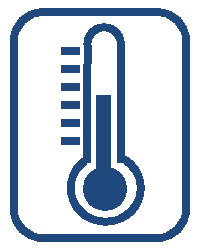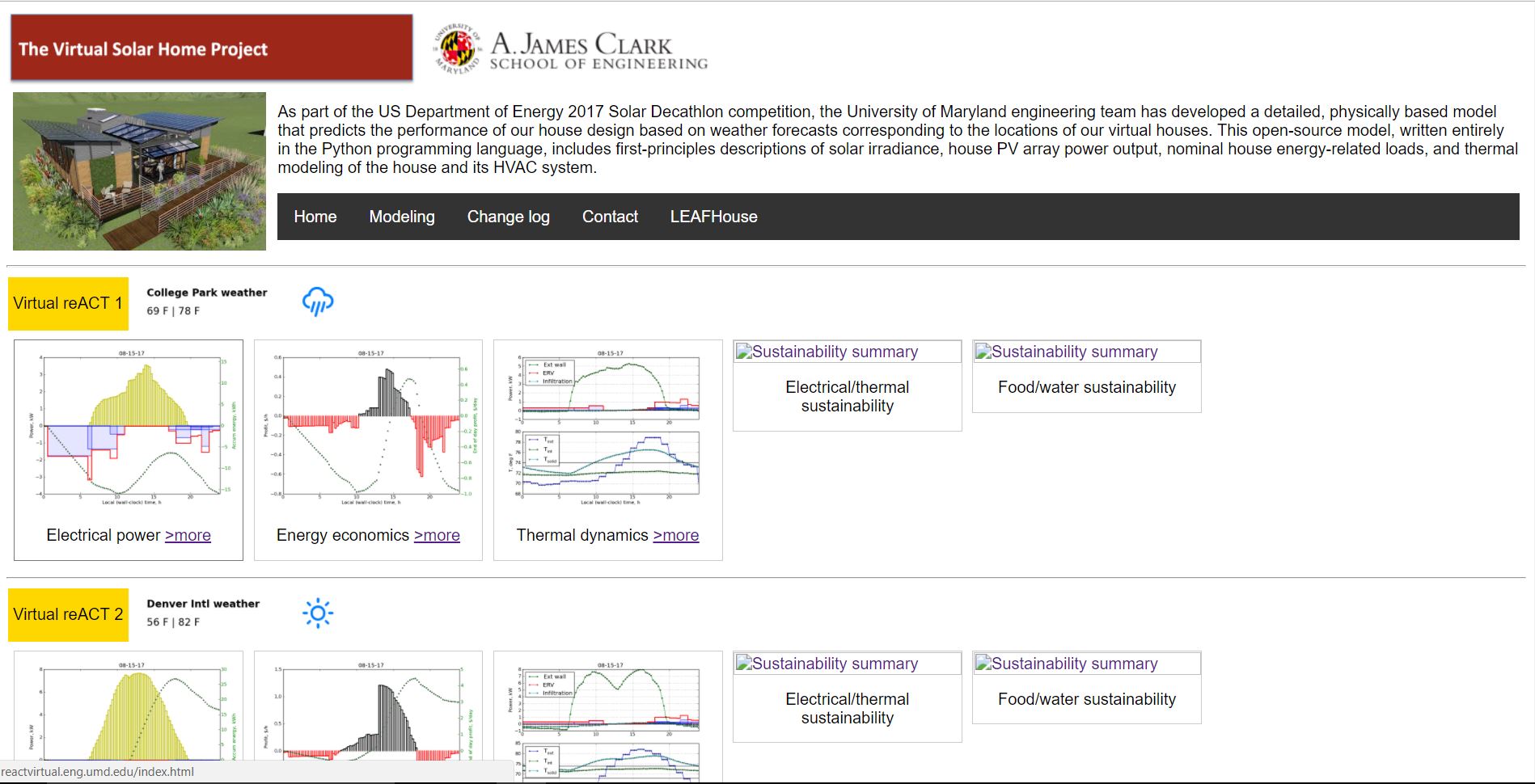Engineering Overview
reACT: resilient Adaptive Climate Technology
The engineering design of reACT was driven by a set of functional requirements aimed at producing a house with an unprecedented combination of resiliency and adaptability.
Houses built using reACT’s design must be able to adapt to:
•the fixed location in which they are constructed
•the dynamic environment which changes continuously over multiple timescales.
Adaptability means self-awareness. reACT predicts its state over a reasonable time horizon so that it can work with homeowners on the best use of resources over the upcoming day or to carry out those tasks autonomously.
reACT uses & recycles low-value resources that would otherwise go to waste.
Sustainability Metrics
One outgrowth of studying the interplay between reACT’s engineering and architectural design elements was the development of four sustainability measures: four metrics that rigorously quantify different aspects of what it means to be sustainable with respect to energy, water, and food.

Electrical Energy
This is a traditional measure of sustainability defined by the difference between the PV power production integrated over the day and the energy consumption of fixed and variable loads. Note that house primary battery storage charge/discharge is not included in this calculation, even if the battery is being charged from the grid.

Thermal Energy
A key reACT design element is its greenhouse-enclosed courtyard (Greencourt) that can be actively controlled to transform it into a thermal energy source or sink for the outdoor units of our heat-pump water heater and HVAC systems. Therefore, the useable thermal energy embodied in the thermal mass of the courtyard becomes a function of the temperature difference between the outdoor air and the courtyard. This and the utility of this thermal energy are used to define a thermal energy sustainability metric unique to reACT.

Water
reACT features rainwater harvesting and a sophisticated greywater filtration and disinfection system to reduce the need for purchasing potable water. Using our model-based estimation of house water resources and automated collection of precipitation forecast data, a water sustainability metric was developed based on a normalized ratio of reclaimed to total water daily use.

Reduced Carbon
This is a traditional measure of sustainability defined by the difference between the PV power production integrated over the day and the energy consumption of fixed and variable loads. Note that house primary battery storage charge/discharge is not included in this calculation, even if the battery is being charged from the grid.
One principle of regenerative design embodied in reACT is that each element should perform more than one function, and that each function should be performed by multiple elements. This web of functionality is essential to resilience and adaptability. reACT achieves this goal through integration of passive and active systems throughout the house.
Engineering Active Systems: HVAC, Power, & Automation
HVAC
Power
The power system, comprising PV (photovolatic or solar power) modules, inverter (our is DC to DC current, so it converts voltage level), battery, and distribution system is arguably the most important mechanical system of the house. Apart from providing power to meet the demands of the other subsystems in a seamless and uninterrupted manner – particularly for critical systems – the power system must also be capable of regulating optimal battery charge levels in both the primary and electric vehicles to enable flexible choices in when to purchase or sell power to the grid.

Automation
Automation is controlled by a model-based (reACT Virtual House) supervisory control architecture. We developed this approach to optimize the house resources based on the objective of avoiding the need to micromanage all house functions. This strategy ensures fault tolerance of our system (the house will continue function in a default mode with the system turned off), that it will be minimally invasive, and it will maximize both potential for upgrades and compatibility with existing and future home automation technologies.






